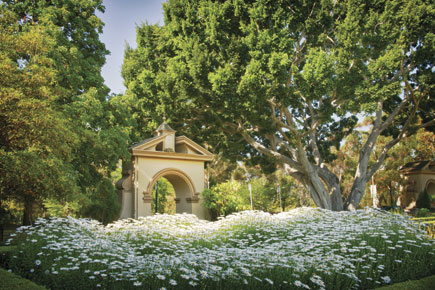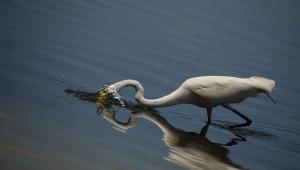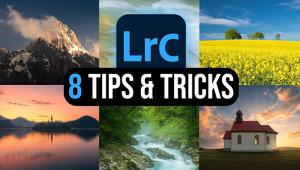Nik Software’s HDR Efex Pro; HDR Software For The Rest Of Us Page 2
Viewing options include a large preview, split screen, or split and separate before and after windows. While I prefer to work within the large window focusing on the final results, seeing before and after using the other options certainly has its appeal, if only because of the late Edward L. Bafford’s advice on working in the traditional darkroom to have “somebody hit you upside your head with a 2x4 if you get carried away with manipulations,” something that’s all too easy to do when working in the HDR genre. In addition to the seven global adjustment sliders, the bottom of the right-hand control panel includes Finishing Adjustments that allow you to add and manipulate Vignettes as well as apply Levels and Curves adjustments from a pop-up window that lets you tweak the final image within HDR Efex Pro.
 |
|
 |
|
|
One of the most important controls on the right side is the HDR Method option that uses four tone mapping algorithms, which enable virtually unlimited HDR looks that can be adapted to a particular style of photography, whether that’s realism or fantasy. HDR Method features a pop-up menu containing 20 different options, ranging from Natural to Harsh Local Contrast, to produce effects ranging from, well, natural looking to the artistic or cartoony, depending on where you stand on the whole HDR issue. Mr. Bafford would have been pleased to know that a digital 2x4 is available via the Method Strength slider that lets you vary the overall effect from zero to 100 percent in 1 percent increments. You can even create monochrome HDR images by using two black-and-white presets that are labeled 11 Artistic and 12 Artistic, but if you look closely you will see that the basic effect was produced by dragging the Saturation slider to zero, which opens up an infinite number of possibilities when combined with the other sliders and built-in HDR Methods.
 |
|
|
Nik’s HDR Efex Pro accommodates JPEG and TIFF files in addition to Raw. Purists will still want to use Raw but you may have some bracketed JPEG sequences in your archives that you can now turn into HDR images. Since I always bracket exposures when shooting digital infrared, I decided to take some of the three- to five-shot bracketed sequences made with the modified Olympus E-P1 to see what happens. Using one of the two monochrome (11 Artistic) presets and then fine-tuning using the sliders on the right, I was able to create digital infrared images with a much greater sense of depth than simply processing one of the images using Adobe Camera Raw or any of the other monochrome techniques that I’ve used over the years.
 |
|
|
HDR For The Rest Of Us
HDR Efex Pro’s suggested retail price is $159.95 and is available as a free update to North American buyers who purchased the Nik Complete Collection after July 25, 2010. Free trial versions and live online training can be found at: www.niksoftware.com/hdrefexpro.
Legendary digital imaging guru Kai Krause once told me that “there were thousands of images hidden inside each of your photographs just waiting to be unleashed” and I think that’s especially true of HDR imaging. Rarely has a new software product opened so many imaging possibilities as Nik’s new HDR Efex Pro. Working with merged TIFF, JPEG, or Raw images to create HDR images now takes on aspects of creative play and I can’t remember the last time I had that feeling with any software product.
 |
|
 |
|
|
System Requirements For Nik’s HDR Efex Pro
Windows
• Windows XP, Windows Vista, and Windows 7
• AMD or Intel processor
• 2GB of RAM (4GB or more recommended)
• Adobe’s Photoshop CS4 through CS5 (64-bit compatible only); or Adobe’s Photoshop Lightroom 2.6 through 3.0 or later (32-bit and 64-bit compatible)
Macintosh
• Mac OS 10.5 through 10.6
• Intel processor
• 2GB of RAM (4GB or more recommended)
• Adobe’s Photoshop CS5 (64-bit compatible only); Adobe’s Photoshop Lightroom 2.6 through 3.0 or later (32-bit and 64-bit compatible); or Apple’s Aperture 2.1.4 through 3.0 or later (32-bit and 64-bit compatible)
For more information, contact Nik Software at: www.niksoftware.com.
- Log in or register to post comments

































